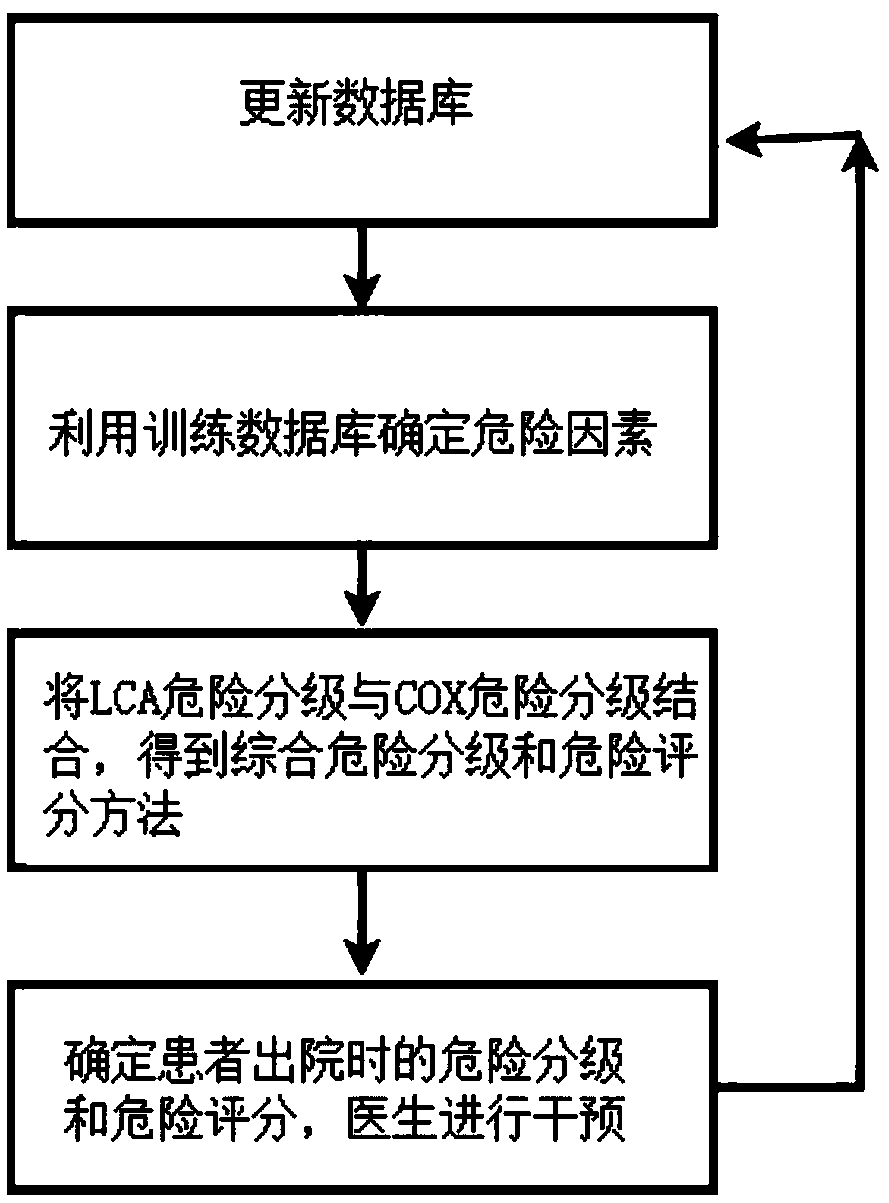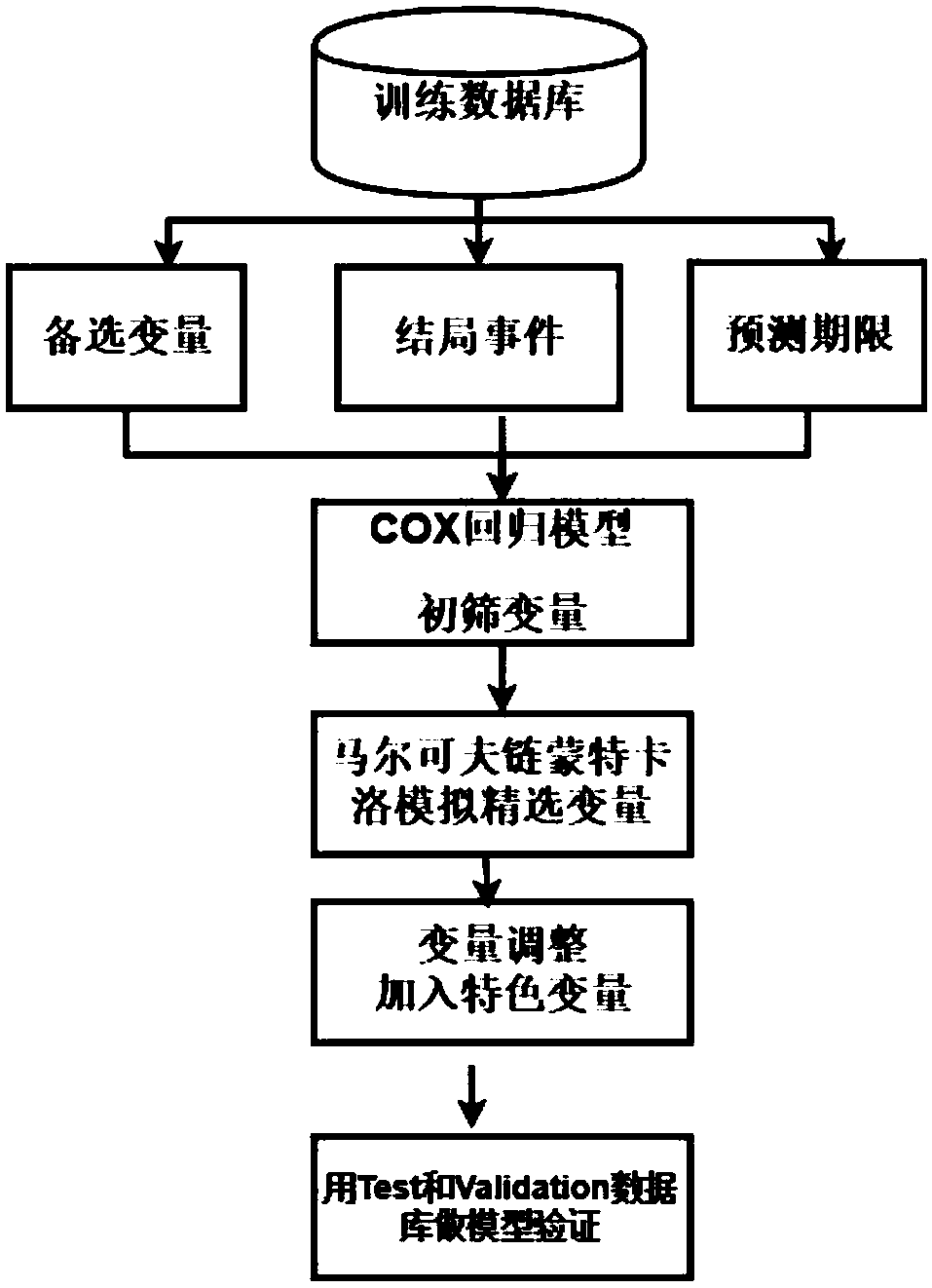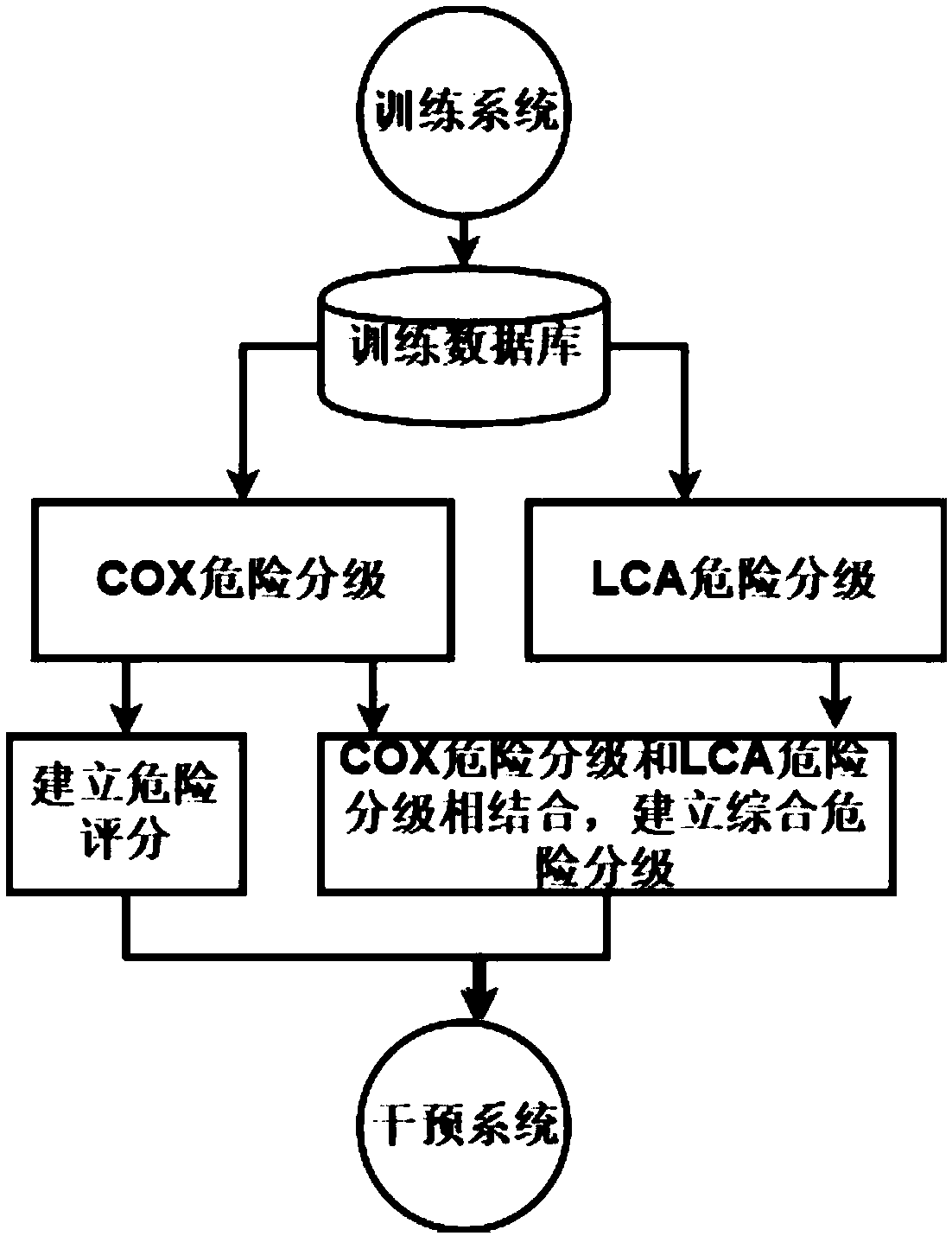Quantitative prediction and intervention system method for long-term prognosis of patient
A patient and prognosis technology, applied in the field of long-term quantitative prediction of patient prognosis and intervention system, can solve problems such as failure to consider uncertainty, no opportunity to re-enter the model, and unstable selection model
- Summary
- Abstract
- Description
- Claims
- Application Information
AI Technical Summary
Problems solved by technology
Method used
Image
Examples
Embodiment Construction
[0130] The present invention will be described in further detail below through specific embodiments and in conjunction with the accompanying drawings.
[0131] Such as figure 1 As shown, a long-term prognosis quantitative prediction and intervention method of a patient described in an embodiment of the present invention comprises the following steps:
[0132] Step 1, add new patient information to the database to update the database.
[0133] This database is the total database of all patient information data, want to obtain representative variable, the selection of training database is very important, the present invention selects representative crowd as training database, promptly selects the data of representative crowd from database as a training database.
[0134] Step 2, using the training database, the risk factors affecting the outcome variables are obtained through the COX regression model and the Markov chain Monte Carlo simulation method, such as figure 2 shown, i...
PUM
 Login to View More
Login to View More Abstract
Description
Claims
Application Information
 Login to View More
Login to View More - R&D
- Intellectual Property
- Life Sciences
- Materials
- Tech Scout
- Unparalleled Data Quality
- Higher Quality Content
- 60% Fewer Hallucinations
Browse by: Latest US Patents, China's latest patents, Technical Efficacy Thesaurus, Application Domain, Technology Topic, Popular Technical Reports.
© 2025 PatSnap. All rights reserved.Legal|Privacy policy|Modern Slavery Act Transparency Statement|Sitemap|About US| Contact US: help@patsnap.com



